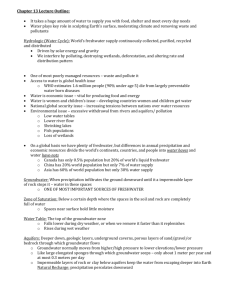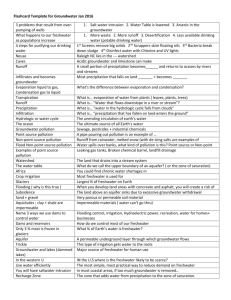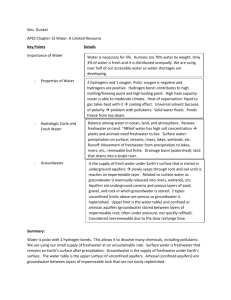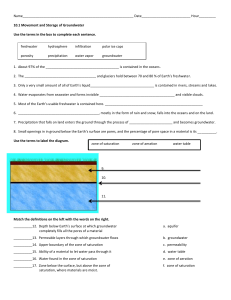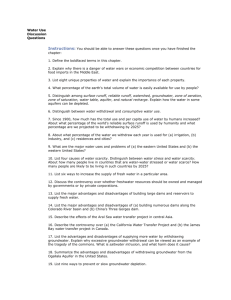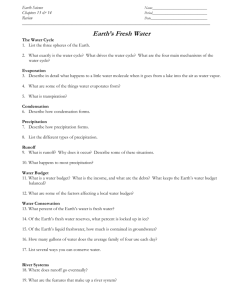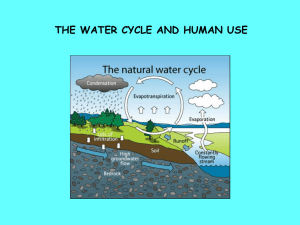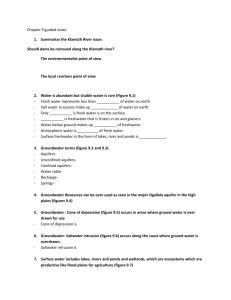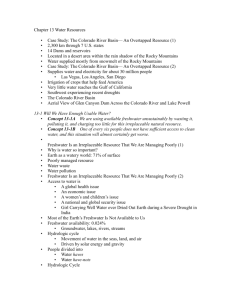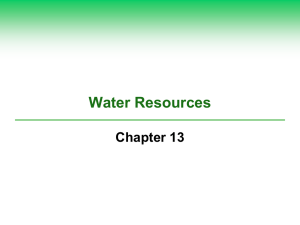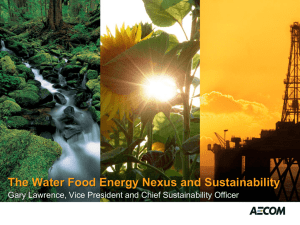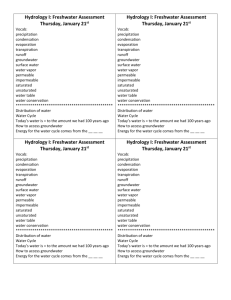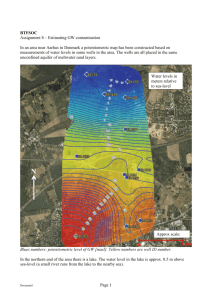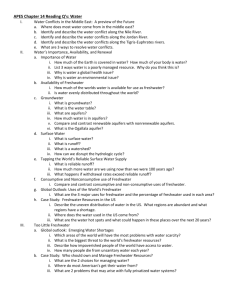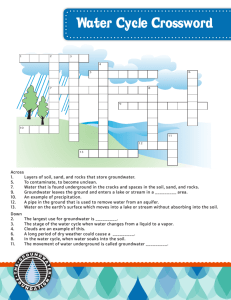Chapter 14 PowerPoint - Edmond Public Schools
advertisement
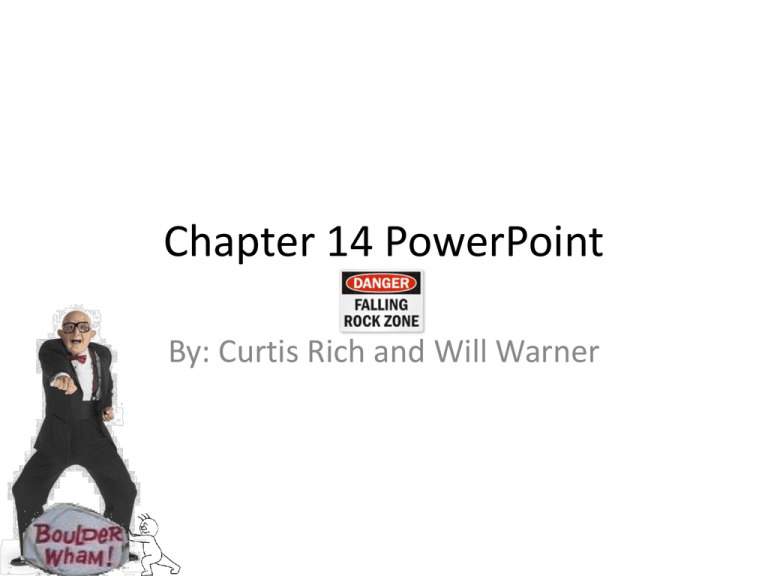
Chapter 14 PowerPoint By: Curtis Rich and Will Warner Objective #1 Q: Why is water so important, how much freshwater is available to us, and how much of it are we using? • A: Water is important to us because it is needed for all life to exist. Without it, no life would exist on Earth. Only 0.024% of earth’s water supply is available to us as liquid freshwater, and we are using 85% of that for irrigation, personal use, and for industry use. Objective #2 Q: What causes freshwater shortages, and what can be done about this problem? •A: Freshwater shortages are due to the wasting of water that us as humans do daily. We can reduce this by managing how much we use on a regular basis. Objective #3 Q: What are the advantages and disadvantages of withdrawing groundwater? •A: The advantages of withdrawing groundwater is that doing so provides clean drinking water for people and can be used for other uses as well. A disadvantage of using groundwater is that it removes water from aquifers and we are pumping this groundwater out faster than the aquifer can replenish it, so eventually we would run out of water. Objective #4 Q: What are the advantages and disadvantages of using dams and reservoirs to supply more water? A: The Advantages of building Dams is that it controls the water running through a specific river. Building the Dam will stop the river flooding and destroying people's living areas. Not only does it provide protection from certain areas, it also provides H.E.P (Hydro-Electric Power) which gives millions of people cheap electricity. But the problem with Dams is that they are extremely expensive to build and maintain. It would take several decades to make a profit out of it. Objective #5 Q: What are the advantages and disadvantages of transferring large quantities of water from one place to another? • A: One of the most common complaints people have come across in industry is that water is highly corrosive: it eventually dissolves almost anything, and causes physical wear on anything it runs through or over such as pipes, riverbeds, pinstocks, water wheels, etc. Some other concerns are its temperature characteristics (it freezes in the northern latitudes, and turns to steam at 1000 Celsius) and its fluidity (we can't just grab a chunk of it and move it, they have to make containers and pipes and stuff to make it go where we need it). Objective #6Q: Can removing salt from seawater solve our water supply problem? • A: Removing salt from seawater would definitely solve our water supply problems, but the technology to do so would require so much energy that we’d be putting more into doing it then we would get out of it. Objective #7 • Q: How can we waste less water? A: By Installing water-saving shower heads and low-flow faucet aerators, insulating your water pipes, and things as easy as turning off your faucet after you wet your toothbrush. Objective #8 • Q: How can we use the earth’s water more sustainably? A: We can sustain earth’s water by using dishwashers and clothes washers for only full loads, keeping a bottle of drinking water in the fridge instead of waiting for faucet water to cool, and by minimizing the use of garbage disposal units. Objective #9 • Q: What causes flooding, and what can we do about it? A: Floods can occur in rivers, when flow exceeds the capacity of the river channel, particularly at bends or meanders. We can prevent this by the creation of flood plains and winding streams to hinder the accumulation of water desalination • Purification of salt water or brackish (slightly salty) water by removal of dissolved salts. drought • Condition in which an area does not get enough water because of lower-than-normal precipitation or higher-than-normal temperatures that increase evaporation. evaporation • Conversion of a liquid into a gas floodplain • Flat valley floor next to a stream channel. For legal purposes, the term often applies to any low area that has the potential for flooding, including certain coastal areas. groundwater • Water that sinks into the soil and is stored in slowly flowing and slowly renewed underground reservoirs called aquifers; underground water in the zone of saturation, below the water table. Compare runoff, surface water. natural recharge • Natural replenishment of an aquifer by precipitation, which percolates downward through soil and rock. recharge area • Any area of land allowing water to pass through it and into an aquifer. reliable runoff • Surface runoff of water that generally can be counted on as a stable source of water from year to year. saltwater intrusion • Movement of salt water into freshwater aquifers in coastal and inland areas as groundwater is withdrawn faster than it is recharged by precipitation. stream • Flowing body of surface water subsidence • Slow or rapid sinking of part of the earth's crust that is not slope-related. surface runoff • Water flowing off the land into bodies of surface water. surface water • Precipitation that does not infiltrate the ground or return to the atmosphere by evaporation or transpiration. water table • Upper surface of the zone of saturation, in which all available pores in the soil and rock in the earth's crust are filled with water. watershed • Land area that delivers water, sediment, and dissolved substances via small streams to a major stream (river). zone of aeration • Zone in soil that is not saturated with water and that lies above the water table. See water table, zone of saturation. zone of saturation • Area where all available pores in soil and rock in the earth's crust are filled by water.


